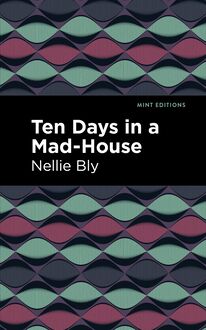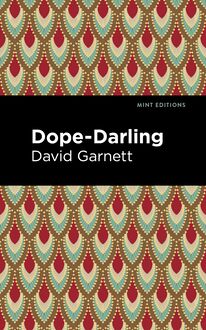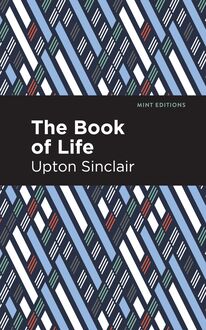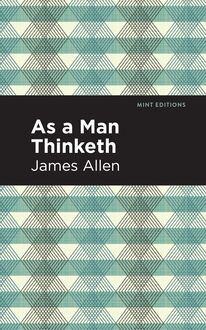-
 Univers
Univers
-
 Ebooks
Ebooks
-
 Livres audio
Livres audio
-
 Presse
Presse
-
 Podcasts
Podcasts
-
 BD
BD
-
 Documents
Documents
-
- Cours
- Révisions
- Ressources pédagogiques
- Sciences de l’éducation
- Manuels scolaires
- Langues
- Travaux de classe
- Annales de BEP
- Etudes supérieures
- Maternelle et primaire
- Fiches de lecture
- Orientation scolaire
- Méthodologie
- Corrigés de devoir
- Annales d’examens et concours
- Annales du bac
- Annales du brevet
- Rapports de stage
La lecture à portée de main
Vous pourrez modifier la taille du texte de cet ouvrage
Découvre YouScribe en t'inscrivant gratuitement
Je m'inscrisDécouvre YouScribe en t'inscrivant gratuitement
Je m'inscrisEn savoir plus
Vous pourrez modifier la taille du texte de cet ouvrage
En savoir plus

Description
Upton Sinclair’s The Book of Life is a contains well founded advice and consists of two parts. The first part, Book of the Mind, covers spiritual topics such as faith, morality, and the subconscious. With intense conversations on the definition of each as well as their relationship and codependence on each other, Sinclair answers tough life questions and provides many thought-provoking ideas. While the first part of Sinclair’s work concerns the intangibles in life, focusing on matters of the mind, the second part of The Book of Life elects to address physical topics. Book of the Body shares Sinclair’s thoughts and research on diets, featuring discussions on how people should consume food, including fasting, and poisonous products. In this section he talks about diseases as well, citing their causes and offering advice on how to avoid them. Book of the Body also contains Sinclair’s advice on love, marriage, and sex. With these topics, Sinclair focuses on both the mental and physical attributes of life, advising how to lead the most fulfilling life possible. Though some of his ideas and advice are dated, The Book of Life remains relevant and interesting to a modern audience. First, though philosophy has progressed since Sinclair’s time, some human truths have remained evident and ever-present. Furthermore, this historical novel reveals the culture and world Sinclair was writing in, as well as allowing readers an intimate side of the esteemed author’s personality. The Book of Life serves as an encouraging work for thought, action, and gives great insights for how Upton Sinclair lived and what he believed. This edition of The Book of Life by Upton Sinclair is now presented in a modern, readable font and features a striking new cover design. With these accommodations, contemporary readers are allowed unparalleled access to Sinclair’s insight on love, sex, health, faith, and morality.
Sujets
Informations
| Publié par | Mint Editions |
| Date de parution | 07 mai 2021 |
| Nombre de lectures | 0 |
| EAN13 | 9781513274874 |
| Langue | English |
| Poids de l'ouvrage | 1 Mo |
Informations légales : prix de location à la page 0,0500€. Cette information est donnée uniquement à titre indicatif conformément à la législation en vigueur.
Extrait
The Book of Life
Upton Sinclair
The Book of Life was first published in 1921.
This edition published by Mint Editions 2020.
ISBN 9781513269870 | E-ISBN 9781513274874
Published by Mint Editions®
minteditionbooks.com
Publishing Director: Jennifer Newens
Design & Production: Rachel Lopez Metzger
Project Manager: Micaela Clark
Typesetting: Westchester Publishing Services
Volume I: Mind and Body
C ONTENTS P ART I. T HE B OOK OF THE M IND I. T HE N ATURE OF L IFE Attempts to show what we know about life; to set the bounds of real truth as distinguished from phrases and self-deception. II. T HE N ATURE OF F AITH Attempts to show what we can prove by our reason, and what we know intuitively; what is implied in the process of thinking, and without which no thought could be. III. T HE U SE OF R EASON Attempts to show that in the field to which reason applies we are compelled to use it, and are justified in trusting it. IV. T HE O RIGIN OF M ORALITY Compares the ways of Nature with human morality, and tries to show how the latter came to be. V. N ATURE AND M AN Attempts to show how man has taken control of Nature, and is carrying on her processes and improving upon them. VI. M AN THE R EBEL Shows the transition stage between instinct and reason, in which man finds himself, and how he can advance to a securer condition. VII. M AKING O UR M ORALS Attempts to show that human morality must change to fit human facts, and there can be no judge of it save human reason. VIII. T HE V IRTUE OF M ODERATION Attempts to show that wise conduct is an adjustment of means to ends, and depends upon the understanding of a particular set of circumstances. IX. T HE C HOOSING OF L IFE Discusses the standards by which we may judge what is best in life, and decide what we wish to make of it. X. M YSELF AND M Y N EIGHBOR Compares the new morality with the old, and discusses the relative importance of our various duties. XI. T HE M IND AND THE B ODY Discusses the interaction between physical and mental things, and the possibility of freedom in a world of fixed causes. XII. T HE M IND OF THE B ODY Discusses the subconscious mind, what it is, what it does to the body, and how it can be controlled and made use of by the intelligence. XIII. E XPLORING THE S UBCONSCIOUS Discusses automatic writing, the analysis of dreams, and other methods by which a whole new universe of life has been brought to human knowledge. XIV. T HE P ROBLEM OF I MMORTALITY Discusses the survival of personality from the moral point of view: that is, have we any claim upon life, entitling us to live forever? XV. T HE E VIDENCE FOR S URVIVAL Discusses the data of psychic research, and the proofs of spiritism thus put before us. XVI. T HE P OWERS OF THE M IND Sets forth the fact that knowledge is freedom and ignorance is slavery, and what science means to the people. XVII. T HE C ONDUCT OF THE M IND Concludes the Book of the Mind with a study of how to preserve and develop its powers for the protection of our lives and the lives of all men. P ART II. T HE B OOK OF THE B ODY XVIII. T HE U NITY OF THE B ODY Discusses the body as a whole, and shows that health is not a matter of many different organs and functions, but is one problem of one organism. XIX. E XPERIMENTS IN D IET Narrates the author’s adventures in search of health, and his conclusions as to what to eat. XX. E RRORS IN D IET Discusses the different kinds of foods, and the part they play in the making of health and disease. XXI. D IET S TANDARDS Discusses various foods and their food values, the quantities we need, and their money cost. XXII. F OODS AND P OISONS Concludes the subject of diet, and discusses the effect upon the system of stimulants and narcotics. XXIII. M ORE A BOUT H EALTH Discusses the subjects of breathing and ventilation, clothing, bathing and sleep. XXIV. W ORK AND P LAY Deals with the question of exercise, both for the idle and the overworked. XXV. T HE F ASTING C URE Deals with Nature’s own remedy for disease, and how to make use of it. XXVI. B REAKING THE F AST Discusses various methods of building up the body after a fast, especially the milk diet. XXVII. D ISEASES AND C URES Discusses some of the commoner human ailments, and what is known about their cause and cure.
PART I
THE BOOK OF THE MIND
I
T HE N ATURE OF L IFE
(A TTEMPTS TO SHOW WHAT WE KNOW ABOUT LIFE ; TO SET THE BOUNDS OF REAL TRUTH AS DISTINGUISHED FROM PHRASES AND SELF - DECEPTION .)
If I could, I would begin this book by telling you what Life is. But unfortunately I do not know what Life is. The only consolation I can find is in the fact that nobody else knows either.
We ask the churches, and they tell us that male and female created He them, and put them in the Garden of Eden, and they would have been happy had not Satan tempted them. But then you ask, who made Satan, and the explanation grows vague. You ask, if God made Satan, and knew what Satan was going to do, is it not the same as if God did it himself? So this explanation of the origin of evil gets you no further than the Hindoo picture of the world resting on the back of a tortoise, and the tortoise on the head of a snake—and nothing said as to what the snake rests on.
Let us go to the scientist. I know a certain physiologist, perhaps the greatest in the world, and his eager face rises before me, and I hear his quick, impetuous voice declaring that he knows what Life is; he has told it in several big volumes, and all I have to do is to read them. Life is a tropism, caused by the presence of certain combinations of chemicals; my friend knows this, because he has produced the thing in his test-tubes. He is an exponent of a way of thought called Monism, which finds the ultimate source of being in forms of energy manifesting themselves as matter; he shows how all living things arise from that and sink back into it.
But question this scientist more closely. What is this “matter” that you are so sure of? How do you know it? Obviously, through sensations. You never know matter itself, you only know its effects upon you, and you assume that the matter must be there to cause the sensation. In other words, “matter,” which seems so real, turns out to be merely “a permanent possibility of sensation.” And suppose there were to be sensations, caused, for example, by a sportive demon who liked to make fun of eminent physiologists—then there might be the appearance of matter and nothing else; in other words, there might be mind, and various states of mind. So we discover that the materialist, in the philosophic sense, is making just as large an act of faith, is pronouncing just as bold a dogma as any priest of any religion.
This is an old-time topic of disputation. Before Mother Eddy there was Bishop Berkeley, and before Berkeley, there was Plato, and they and the materialists disputed until their hearers cried in despair, “What is Mind? No matter! What is Matter? Never mind!” But a century or two ago in a town of Prussia there lived a little, dried-up professor of philosophy, who sat himself down in his room and fixed his eyes on a church steeple outside the window, and for years on end devoted himself to examining the tools of thought with which the human mind is provided, and deciding just what work and how much of it they are fitted to do. So came the proof that our minds are incapable of reaching to or dealing with any ultimate reality whatever, but can comprehend only phenomena—that is to say, appearances—and their relations one with another. The Koenigsberg professor proved this once for all time, setting forth four propositions about ultimate reality, and proving them by exact and irrefutable logic, and then proving by equally exact and irrefutable logic their precise opposites and contraries. Anybody who has read and comprehended the four “antinomies” of Immanuel Kant * knows that metaphysics is as dead a subject as astrology, and that all the complicated theories which the philosophers from Heraclitus to Arthur Balfour have spun like spiders out of their inner consciousness, have no more relation to reality than the intricacies of the game of chess.
The writer is sorry to make this statement, because he spent a lot of time reading these philosophers and acquainting himself with their subtle theories. He learned a whole language of long words, and even the special meanings which each philosopher or school of philosophers give to them. When he had got through, he had learned, so far as metaphysics is concerned, absolutely nothing, and had merely the job of clearing out of his mind great masses of verbal cobwebs. It was not even good intellectual training; the metaphysical method of thought is a trap . The person who thinks in absolutes and ultimates is led to believe that he has come to conclusions about reality, when as a matter of fact he has merely proved what he wants to believe; if he had wanted to believe the opposite, he could have proven that exactly as well—as his opponents will at once demonstrate.
If you multiply two feet by two feet, the result represents a plain surface, or figure of two dimensions. If you multiply two feet by two feet by two feet, you have a solid, or figure of three dimensions—such as the world in which we live and move. But now, suppose you multiply two feet by two feet by two feet by two feet, what does that represent? For ages the minds of mathematicians and philosophers have been tempted by this fascinating problem of the “fourth dimension.” They have worked out by analogy what such a world would be like. If you went into this “fourth dimension,” you could turn yourself inside out, and come back to our present world in that condition, and no one of your three-dimension friends would be able to imagine how you had managed it, or to put you back again the way you belonged. And in this, it seems to me, we have the perfect analogy of metaphysical thinking. It is the “fourth dimension” of the mind, an
-
 Univers
Univers
-
 Ebooks
Ebooks
-
 Livres audio
Livres audio
-
 Presse
Presse
-
 Podcasts
Podcasts
-
 BD
BD
-
 Documents
Documents
-
Jeunesse
-
Littérature
-
Ressources professionnelles
-
Santé et bien-être
-
Savoirs
-
Education
-
Loisirs et hobbies
-
Art, musique et cinéma
-
Actualité et débat de société
-
Jeunesse
-
Littérature
-
Ressources professionnelles
-
Santé et bien-être
-
Savoirs
-
Education
-
Loisirs et hobbies
-
Art, musique et cinéma
-
Actualité et débat de société
-
Actualités
-
Lifestyle
-
Presse jeunesse
-
Presse professionnelle
-
Pratique
-
Presse sportive
-
Presse internationale
-
Culture & Médias
-
Action et Aventures
-
Science-fiction et Fantasy
-
Société
-
Jeunesse
-
Littérature
-
Ressources professionnelles
-
Santé et bien-être
-
Savoirs
-
Education
-
Loisirs et hobbies
-
Art, musique et cinéma
-
Actualité et débat de société
- Cours
- Révisions
- Ressources pédagogiques
- Sciences de l’éducation
- Manuels scolaires
- Langues
- Travaux de classe
- Annales de BEP
- Etudes supérieures
- Maternelle et primaire
- Fiches de lecture
- Orientation scolaire
- Méthodologie
- Corrigés de devoir
- Annales d’examens et concours
- Annales du bac
- Annales du brevet
- Rapports de stage













